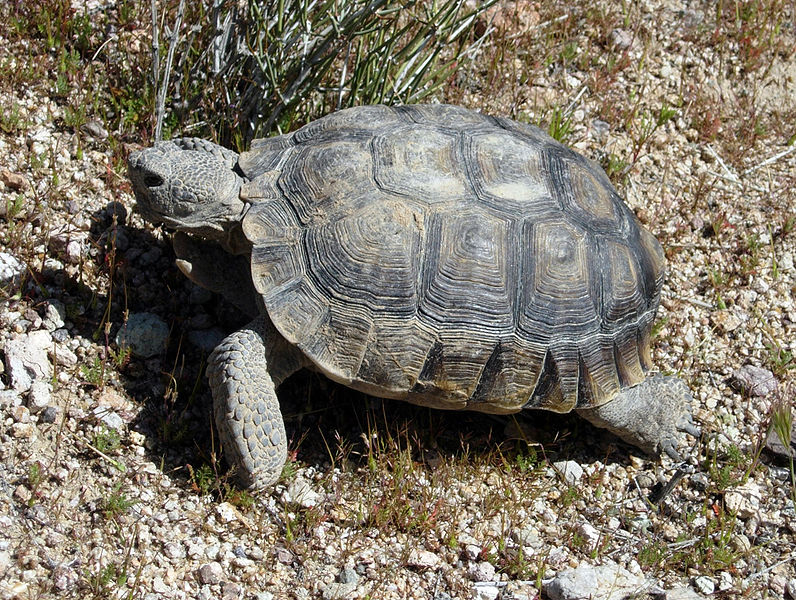
Disease Transmission
Disease introduction is a particularly serious concern when an animal is introduced into the range of a relative, as is the case with African Spurred Tortoises in Arizona.
Native Desert Tortoise, Gopherus agassizii, populations, already fragile, could be decimated by a disease or parasite that may be carried by, but is relatively harmless to, Spurred Tortoises. This was a common occurrence in zoos when related animals from different parts of the globe were exhibited together, and the chief reason why I advise pet-keepers against the practice.
Good Intentions Threaten Desert Tortoises
A similar scenario played out in the Arizona deserts in the 1970’s and 1980’s. Numerous Desert Tortoises (please see photo) that had been illegally collected were confiscated and released back into the wild. Unfortunately, many appeared healthy but harbored an upper respiratory disease that spread rapidly in the wild population…on some study plots, 70% of the adults died over a 4 year period (please see article below).
Recently (January, 2011), Desert Tortoises being relocated to make way for a solar project in San Bernadino, California were found to have upper respiratory disease. Biologists theorize that the disease introduced in the 1970’s may still be moving through the population, or that stresses due to habitat development may leaving tortoises vulnerable to naturally-occurring pathogens (please see article below).
Infamous Reptile Invaders
It’s only recently that introduced reptiles and amphibians have begun to rival rats, ants, starlings, roaches, goats and other historical colonizers in distribution, but we must now take them seriously. Florida’s feral Burmese Pythons and Nile Monitors have been much in the news these days, but a lesser-known introduction in the South Pacific has had far more serious consequences (so far).
 Introduced to Guam in the 1940’s, the Brown Tree Snake, Boiga irregularis, (please see photo) had, by the mid 1980’s, exterminated nearly every native bird species on the island. I worked with Tree Snakes, Guam Rails and Micronesian Kingfishers at that time, and was astounded by the environmental devastation described in the field reports I received.
Introduced to Guam in the 1940’s, the Brown Tree Snake, Boiga irregularis, (please see photo) had, by the mid 1980’s, exterminated nearly every native bird species on the island. I worked with Tree Snakes, Guam Rails and Micronesian Kingfishers at that time, and was astounded by the environmental devastation described in the field reports I received.
Please use caution when working with herps not native to your area, and report any sightings of exotics to your state wildlife agency, or contact me for advice.
Further Reading
Sliders Out-Compete European Native Turtles Respiratory Disease in Desert Tortoises: History and recent findings
Natural History of the African Spurred Tortoise
 That Reptile Blog – Reptile, Amphibian and Exotic Pet Care and Information
That Reptile Blog – Reptile, Amphibian and Exotic Pet Care and Information


